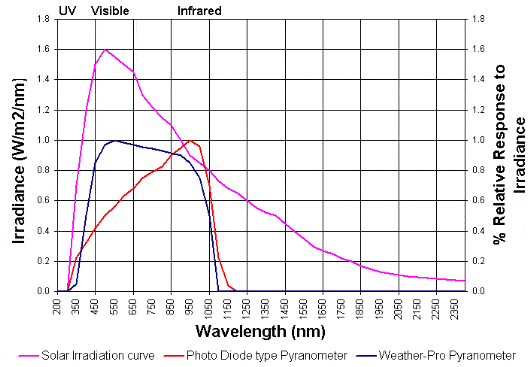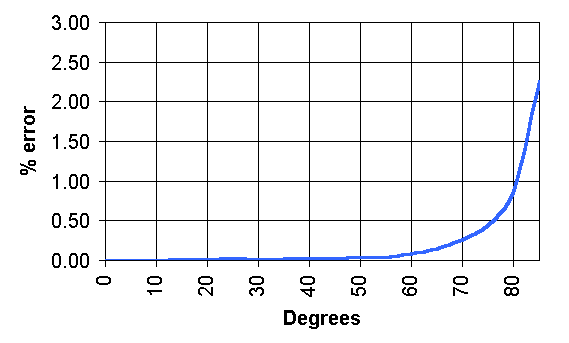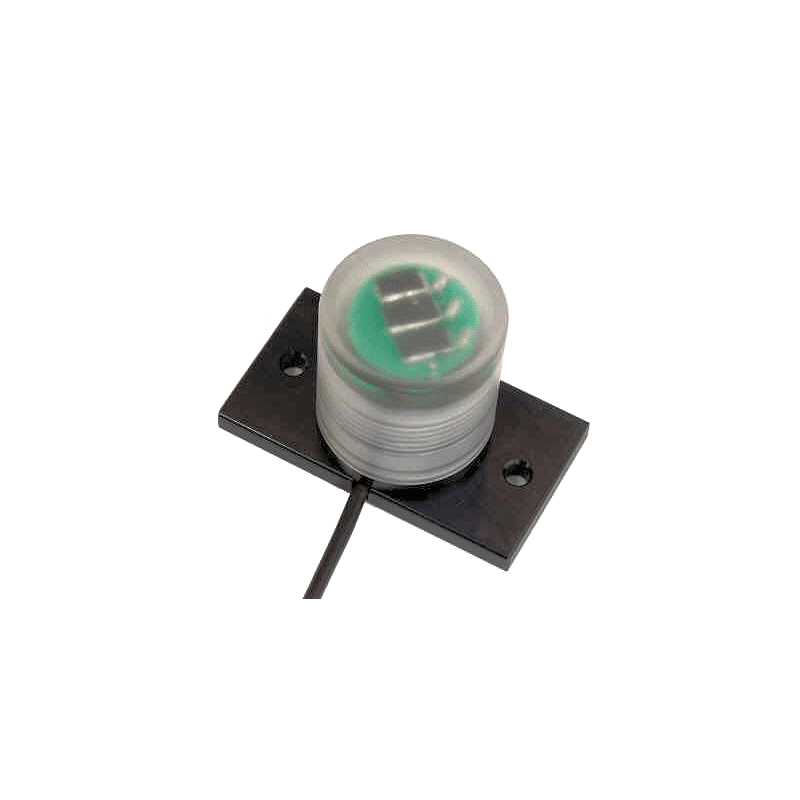The LE-CL Pyranometer uses an polycrystalline silicon solar cell to measure the incoming global solar radiation. This gives good accuracy without the expense and maintenance required by a thermopile pyranometer.
It can be supplied free standing on a Base Mounting Plate (as picture above), or attached to a L Bar or T Bar Equipment Mounting Arm.
It also provides a flatter spectral response than the photo diodes that are frequently used for this type of sensor.
The pyranometer has a relatively large surface compared to many photo diode sensors. This minimizes inaccuracies caused by the effect of rain drops and dirt on the surface. The sensor has a slightly domed top to facilitate rain drainage. Dirt sitting on the surface of the sensor is dispersed by rain flowing off the dome.
Spectral Response Graph

Spectral Response
The full terrestrial solar spectrum deposits measurable energy at the earth’s surface in the range from 287 nanometers (nm) to beyond 4000 nm. However, as can be seen from the spectral response graph, the pyranometer measures the radiation between 300 and 1100 nanometers. As over 90% of the solar energy is between 300 to 1100 nm, the pyranometer is calibrated so as to estimate the short-wave component of the solar radiation.
Cosine Response Graph

An ideal pyranometer collects radiation from horizon to horizon and should therefore have a reception angle of 180° in all directions. In reality, some low angle radiation will not be detected because of the geometry of the sensor but this has been minimized by the sensor head design. As can be seen from the cosine response graph, the cosine error for this pyranometer is typically less than 3% from vertical to 85° in all directions.
Other sources of error
The polycrystalline silicon solar cells have a temperature coefficient of 0.15% per 1°C. The pyranometer is calibrated at 20°C giving a possible 3% error from 0°C to 40°C
The output of all radiation sensors tends to decrease over time as the detector ages. Our calculations estimate that the average decrease of the sensor is between 1% and 2 % per year.
This unit can be added to one of our Fully Mounted Weather Stations or our Small and Medium Weather Systems.

